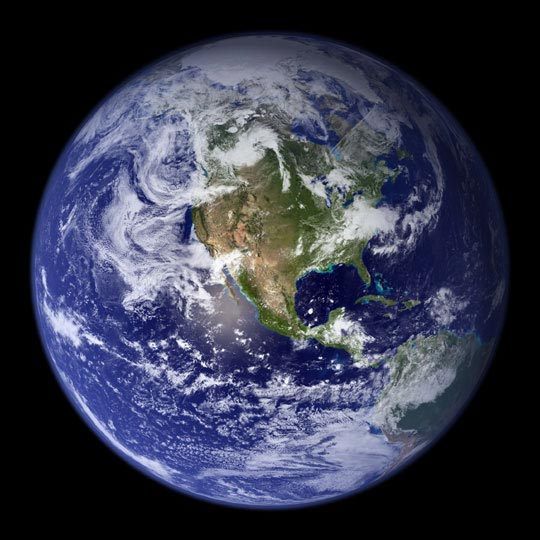Global Warming Action Must Happen Soon: Scientist

The longer it takes nations to cumulatively lower greenhouse gas emissions, the more difficult it will be to limit warming, and so avert the most severe effects of global warming.
This is not new science, but even so, greenhouse gases have continued to accumulate ever faster in the atmosphere for many years.
"I am a fundamentally optimistic person, but it is getting more and more difficult, because I see the message of science has not fundamentally changed from when I started working in this field, which was 20 years ago," said Thomas Stocker, a professor of climate and environmental physics at the University of Bern in Switzerland.
Recent computer-modeling work has examined the prospects for capping warming, "but not in a way that makes it evident to the wider public that the doors are closing on these targets," Stocker said. [8 Ways Global Warming Is Already Changing the World]
Targets & outcomes
In a paper published in Friday's (Nov. 30) issue of the journal Science, Stocker puts the issue in terms intended to make the information more accessible. While his paper does not offer firm deadlines, he describes the situation in simplified, mathematical terms, showing "every year counts," he writes.
Based on two assumptions — that it is not economically feasible for nations to make emissions reductions of more than about 5 percent per year and that increasing carbon dioxide concentrations have a moderate warming effect — he calculates a 2.7 degree Fahrenheit (1.5 degree Celsius) cap on warming, for which island nations vulnerable to rising sea levels have pushed, is already unrealistic. (That cap is often compared to a speed limit for warming; while some consequences — heat waves, species loss and so on — are expected to occur at lesser levels of warming, the repercussions are expected to become more dire as warming increases.)
Sign up for the Live Science daily newsletter now
Get the world’s most fascinating discoveries delivered straight to your inbox.
Reductions would need to begin by 2027 for the more widely accepted 3.6-degree F (2 degrees C) cap to be achievable, and a 4.5 degree F (2.5 degree C) cap becomes unrealistic after 2040, he calculates.
At global talks in 2009 in Copenhagen, nations agreed to keep warming below 3.6 degrees F to avert the worst effects of climate change. Delegates are currently gathered in Qatar working on agreements intended to make this target achievable.
In an April 2009 paper in the journal Nature, Gavin Schmidt, a climate scientist at NASA's Goddard Institute for Space Studies,and colleague David Archer wrote that unless emissions start to "decline very soon, severe disruption to the climate system will entail expensive adaptation measures and may eventually require cleaning up the mess by actively removing [carbon dioxide]from the atmosphere. Like an oil spill or groundwater contamination, it will probably be cheaper in the long run to avoid making the mess in the first place."
The carbon-warming equation
Cumulative emissions, the total greenhouse gases released by humans since the Industrial Revolution, will determine the amount of future warming, climate scientists agree.
However, the exact degree to which additional carbon dioxide, the primary greenhouse gas, will pump up warming isn't known. Scientists do know this relationship will be determined by two factors: climate sensitivity, which is the amount of warming produced by a doubling of the carbon dioxide in the atmosphere; and the planet's, particularly the oceans', capacity to take up excess carbon dioxide.
Based on what is known about these effects, climate scientists estimate that each 1.1 trillion tons (1 trillion metric tons) of carbon from carbon dioxide will produce between 2.3 and 7 degrees F (1.3 and 3.9 degrees C) of warming.
Follow LiveScience on Twitter @livescience. We're also on Facebook & Google+.










